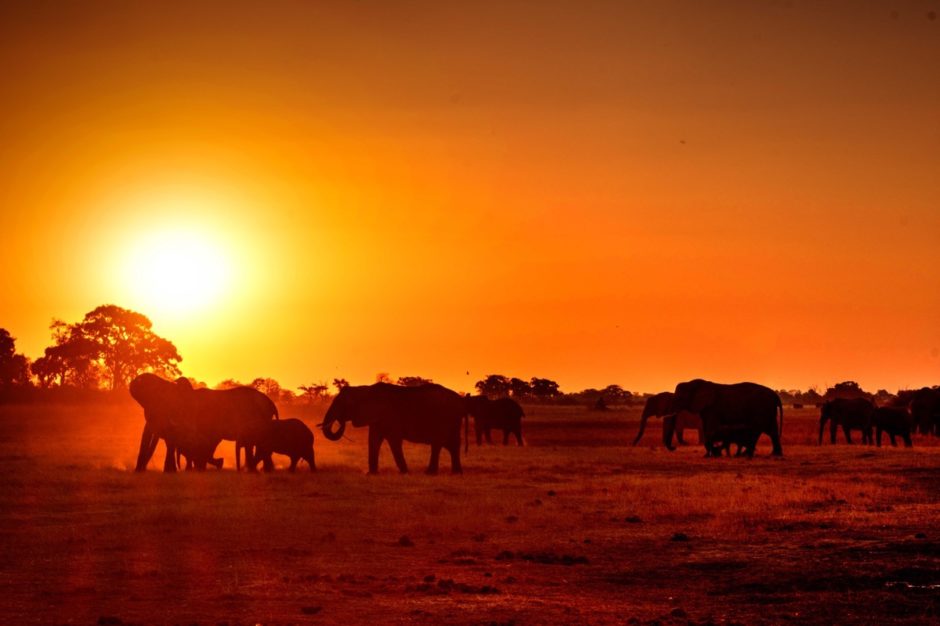We began our short tour of the divided city of Belfast with a visit to a housing development in the Protestant Shankill Road area.  The murals on the walls of the buildings are among the most photographed in Ireland.  They point to the fact, as one writer said, that the Irish are much like elephants, they never forget.  The murals range in tone from pacific to heavily militaristic, from recent heroes and events to ancient history and mythology.  The mural below memorialized a modern hero, Stevie Topgun McKeag.
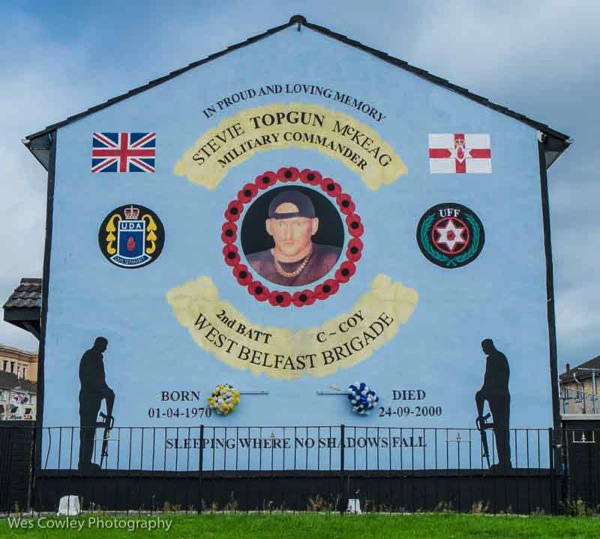
A hero to the Ulster Protestants, but apparently a stone cold  murderer and drug addict.   http://www.theguardian.com/uk/2000/oct/01/northernireland.henrymcdonald.
The friendly looking  fellow below is extracted from one of the murals and is one of the most recognized figures.  His eyes supposedly follow you much like those of Mona Lisa are alleged to do.
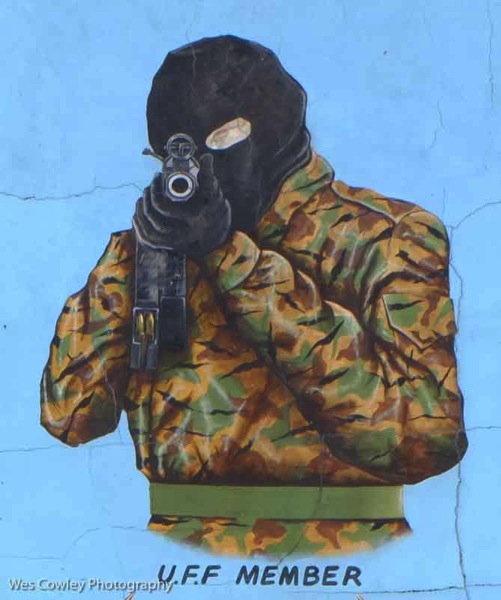
Cuchulainn, a nythological Ulster hero is commemorated in the mural below. Â http://www.bartleby.com/182/302.html
Read the inscription, enlarged for your benefit.
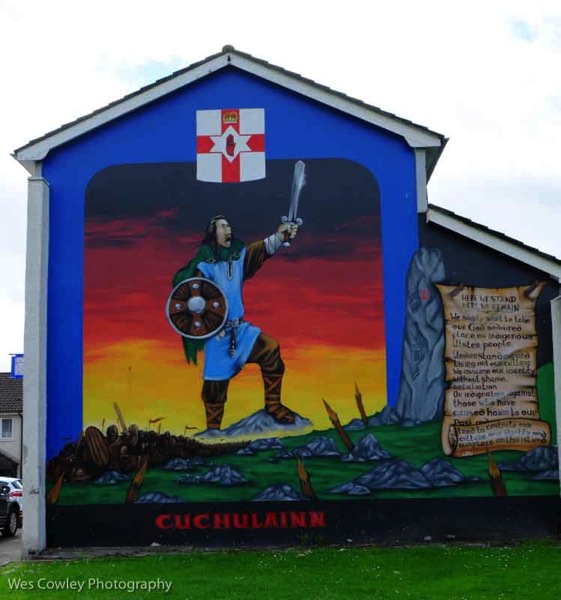 Â
 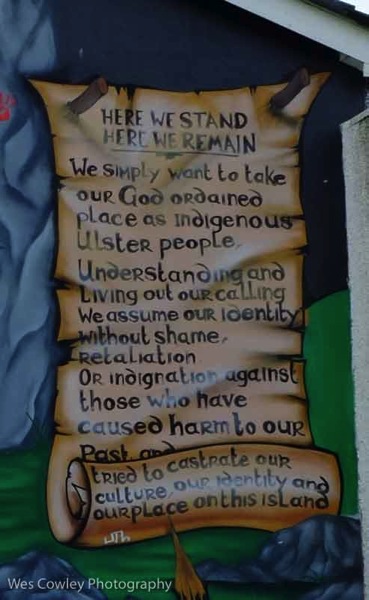
Doesn’t show a lot of sentiment for compromise. Â The Ulster people here referenced are Protestant and British. Â Their enemies are the Catholic Irish who have been fighting for self rule and their rights for centuries. Â With the partition of Ireland, the Catholic majority gained ascendancy in the Republic of Ireland, but, as a large minority, remained disenfranchised until very recently in Ulster, or the six counties that were pared off to create Northern Ireland.
The mural below celebrates the victory of King William III over the Catholic King James. James was trying to regain the throne of England but lost to William in the Battle of the Boyne.  http://www.theguardian.com/uk/2000/jul/12/northernireland.comment Another link: http://www.bbc.co.uk/history/events/battle_of_the_boyne
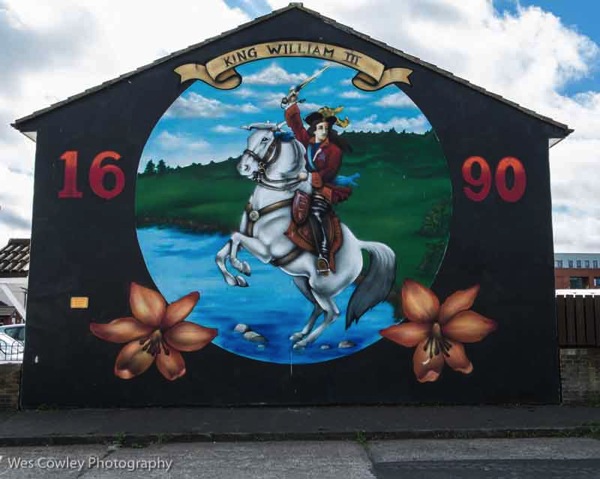
An enduring legend is that of the Red Hand of Ulster, which became the emblem of Ulster’s identity. Â http://www.uktravelbureau.com/regions/uk-travel-search-engine-ireland/redhand.cfm
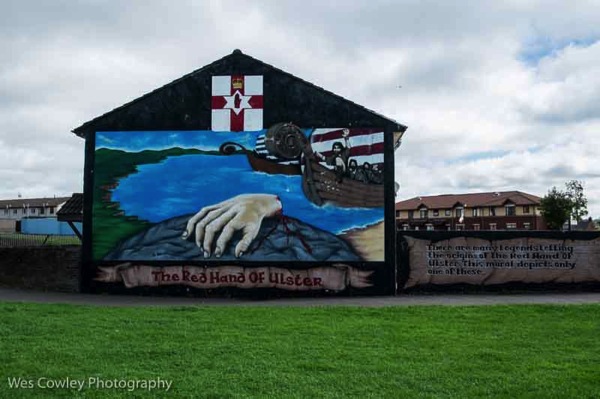
The housing development where these murals are located is a very pleasant place with children’s toys strewn around, belying the militaristic, hateful nature of many of the murals. Â As Catholics would not likely enter this area even now, the murals primarily serve as an education and reminder for the Protestant residents. Â Keeping the fire stoked one might say.
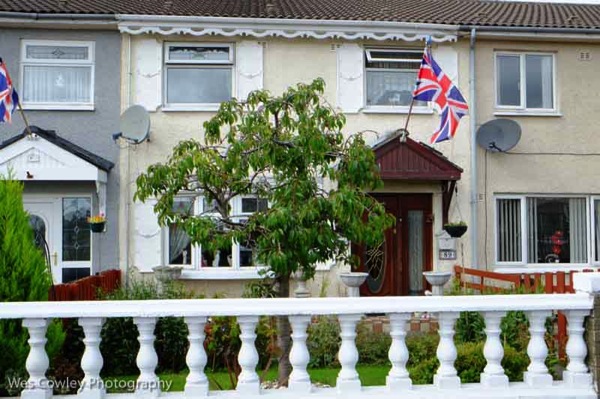
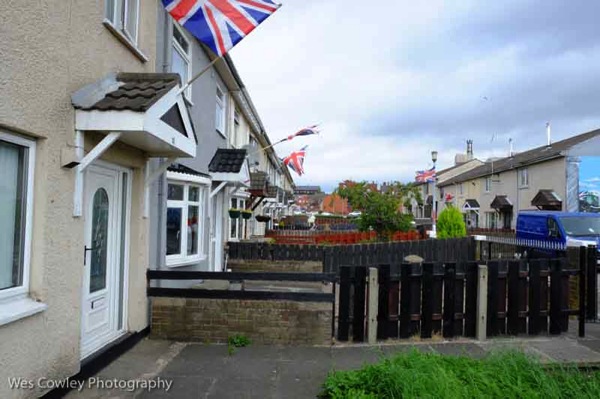
It is hard to imagine  the hatred that has filled these people for so many years.  Joel, our Protestant driver and Damon, our Catholic driver, went to great lengths to tell us that the situation had greatly improved since the peace accord of 1998 brokered by Bill Clinton and George Mitchell and that real strides were being made in bringing the two communities together.  They claimed that most of the problems now are caused by roughnecks with too little to do and too much time on their hands.  One has to hope that they are right.  Yet, the communities remain divided by “Peace Walls,” not only in Belfast but in other areas of Northern Ireland.  A section of the wall in Belfast below:
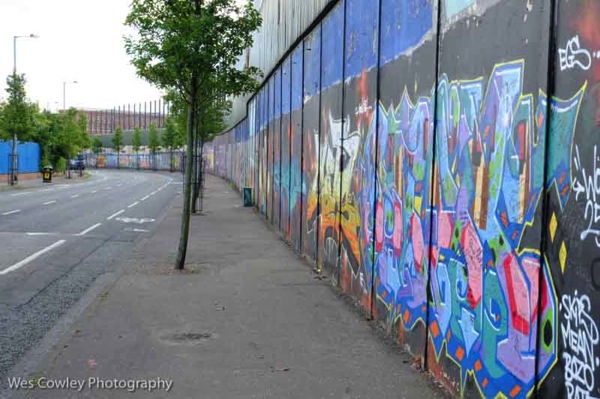
A gate in the peace wall:
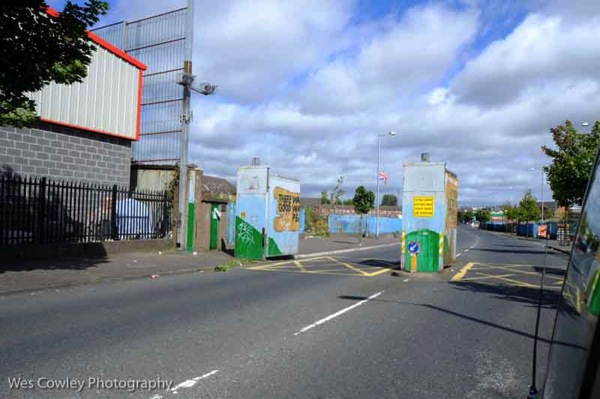
I believe I am correct that there are 7 gates in the Belfast Peace Wall(s) and they were all closed at night. Â According to the driver, one or more are now left open at night and on weekends. Â A sign of the lessening of tensions perhaps. Â We visited a Catholic residential street, and a shrine to the those who died from that area during the Troubles.
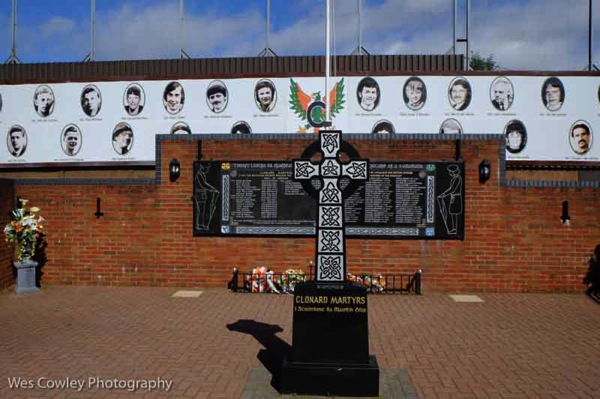
We noticed the Irish language beginning to appear in the Catholic areas, a language they are trying to revive in both the Republican (Catholic) areas of Northern Ireland and in the Republic of Ireland, a language which is despised by the Unionists (Protestants.) Â The Irish language is a form of Gaelic, related to the native languages of both Wales and Scotland.
Gina listening to our drivers, Joel on left and Damon on right:
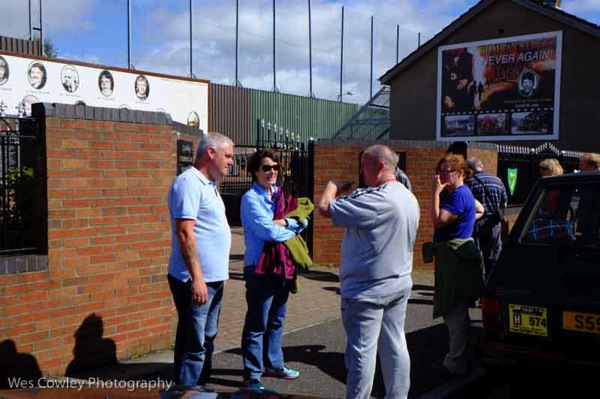
Yours truly leaning on black taxi:
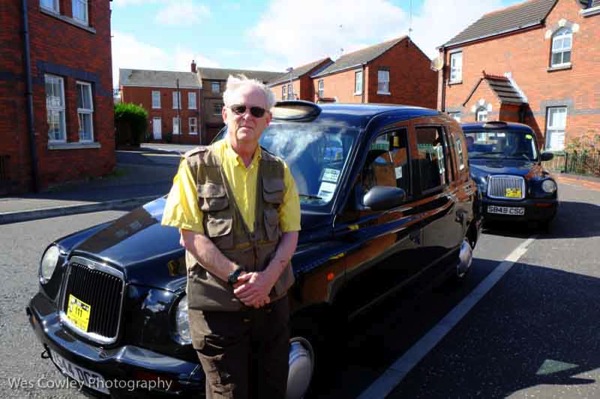
We then drove to the Solidarity Wall on The Falls Road, where the Catholics show their solidarity with other freedom struggles through out the world. Â A few of the murals below:
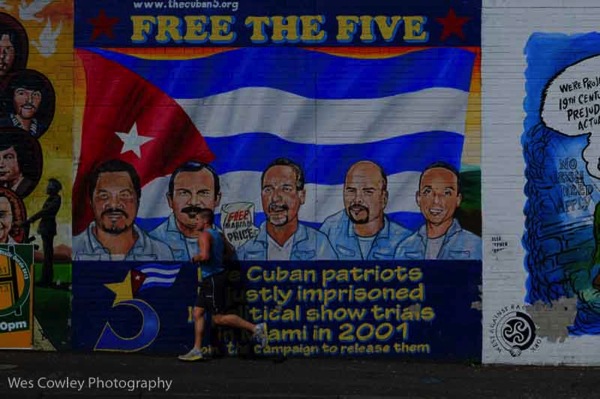
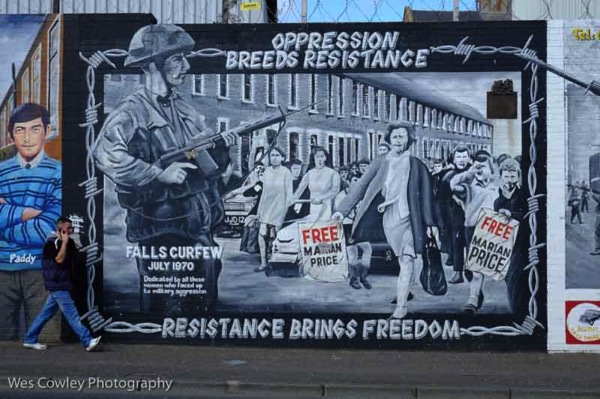
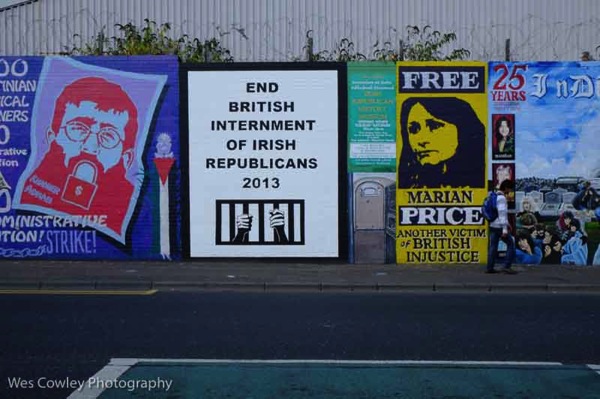
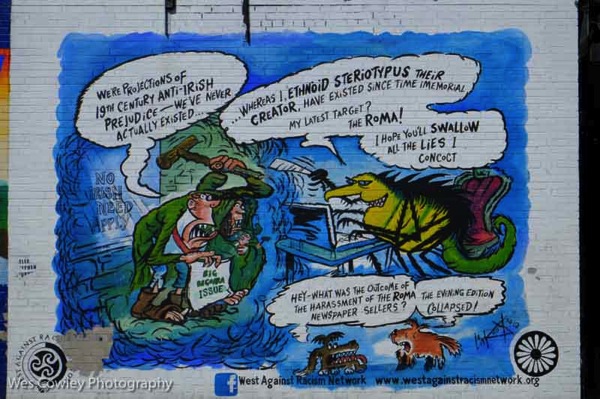
And finally an ad for the Black Cab tours:
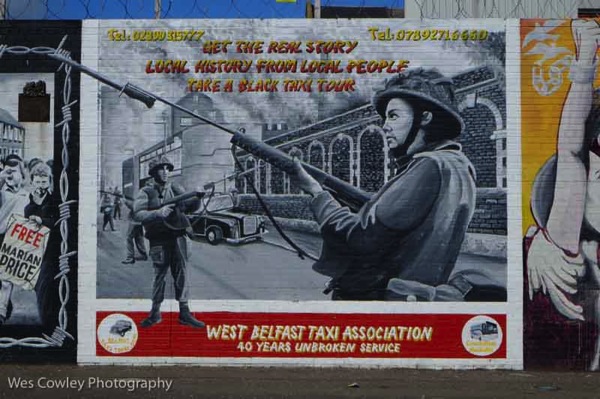
We leave Belfast late afternoon for the Antrim coast. Â Below are more interesting links.
First from the Obama administration’s favorite news outlet:
Very good Smithsonian article:
http://www.smithsonianmag.com/people-places/Getting-Past-the-Troubles.html?c=y&story=fullstory
Bloody Sunday:
http://www.bloodysundaytrust.org/
This is an excellent blog entry. Â I just wish I could write this well:
http://bulahoop.com/2012/06/27/belfast-murals-remembering-the-troubles/
Rick Steves on Northern Ireland:
http://www.ricksteves.com/tvr/northirerse304_scr.htm
The 1916 Easter Uprising that led to home rule:
http://www.historylearningsite.co.uk/easter_uprising.htm
Formation of the Northern Ireland state:
http://www.gale.cengage.com/pdf/whitepapers/gdc/FormationOfNorthernIreland.pdf
If you are not asleep now, I can’t do anymore. Â Next post coming. Â Be patient.
